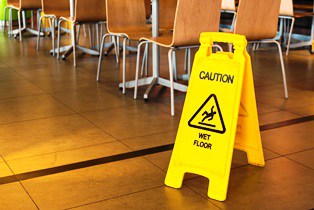Our
Atlanta negligent security lawyers were disappointed to see earlier this month that Georgia’s Supreme Court upheld a provision of the new tort reform law dealing with premises liability.
The case at hand was about a Georgia man, Nairobi Couch, who was attacked, abducted, and robbed by unknown assailants at a Red Roofs Inn at North Druid Hills Road and Buford Highway in Atlanta in August 2009. None of Mr. Couch’s attackers have ever been identified. He sued Red Roof claiming they failed to keep their premises safe and provide adequate security, according to news sources. Red Roof filed an intention to argue “fault of non-partyunder a recently amended Georgia law and stating that the damages should be decreased in whole or in part due to the fault of the criminals who attacked Mr. Couch. Mr. Couch opposed the move, and challenged the amended statute as unconstitutional. Mr. Couch’s lawsuit is still pending before a federal court in Atlanta, but US District Court for the Northern District of Georgia Judge Steve Jones asked the state Supreme Court for an interpretation of the 2005 tort reform law.
The Supreme Court decided, in a five to two vote, that when deciding on an award a jury can consider the fault of the assailants and apportion the amount of damages to Red Roof based on the percentage of responsibility for the attack. The Court also stated that a jury can receive a special verdict form requiring it to apportion the damages between the hotel and the assailants, if the jury finds liability. Writing for the majority, Justice Harold Melton said the law “makes all persons responsible according to their respective percentages of responsibility.Justice Melton went on to say in the ruling, “The rules of statutory construction, including reliance on ordinary word meanings, dictate that an assailant who evades hotel security to intentionally abduct, rob and assault a hotel guest is, at the very least, partially at €˜fault’ for the brutal injuries inflicted by the assailant on that guest.He also wrote, “As a party at fault, such an assailant must be included with others who may be at fault, e.g., the property owner in a premises liability action, for purposes of apportioning damages among all wrongdoing parties.
 Restaurants are bustling, high-trafficked areas that require regular cleaning and other maintenance to ensure the safety of patrons. When restaurant owners, management, and staff fail to take proper precautions, serious slip and fall accidents and injuries can occur.
Restaurants are bustling, high-trafficked areas that require regular cleaning and other maintenance to ensure the safety of patrons. When restaurant owners, management, and staff fail to take proper precautions, serious slip and fall accidents and injuries can occur.
 Georgia Personal Injury Lawyer Blog
Georgia Personal Injury Lawyer Blog






